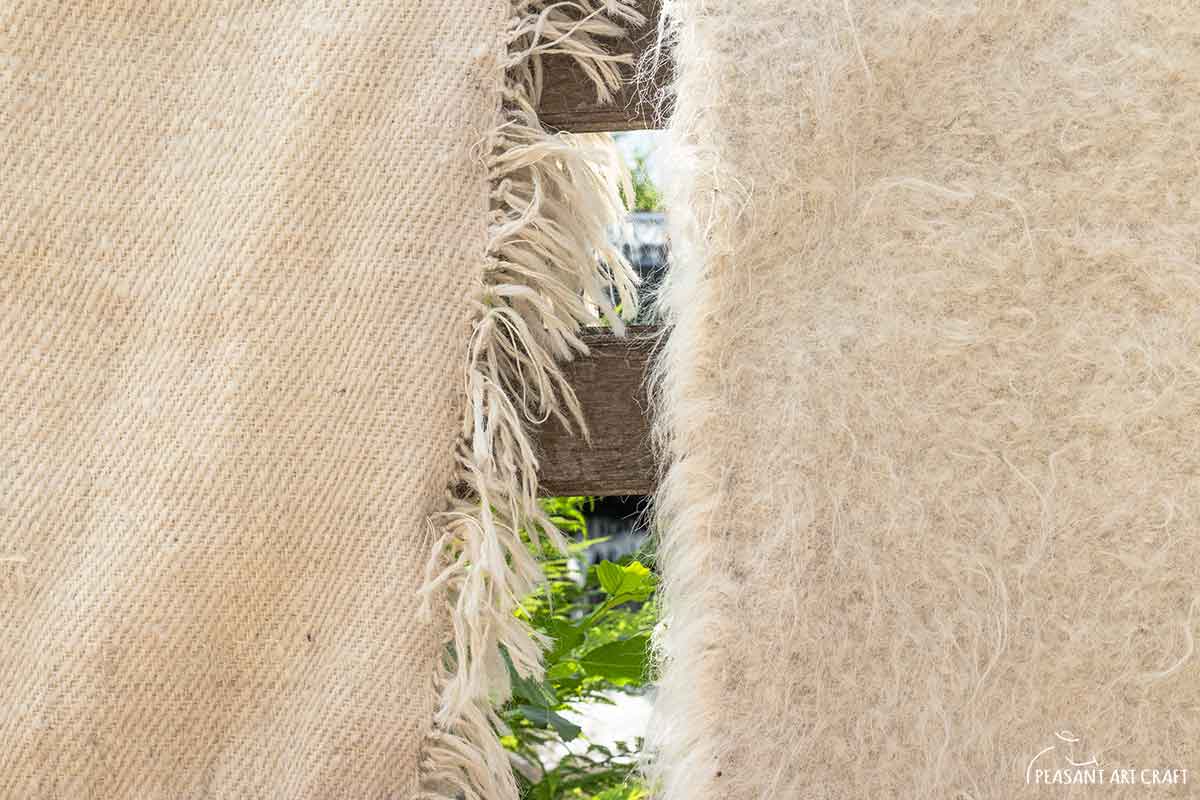
The day was here at last! I was going to see a properly operating fulling mill in the locals’ backyard. This is something I’ve been meaning to show you for years. It was the fulling season in the village of Sârbi, Maramureș and the mill worked without rest. From outside, the house numbered 173 looked like a regular house from Maramureș, with tall wooden gates, and a sign that read: “The technical peasant installations for fulling wool and wool processing use, ingeniously, local resources, such as wood and water to process wool.”

The sound of a nearby stream and loud stamping noises could be heard from the distance, and it was getting louder as we approached the back barn. In the barn, two wooden stocks like giant’s dancing feet pounded wool into felt with crashes and booms, pounding on and on. Just then, the lady of the house, Ms. Juja Haiducean, came busily by, pouring hot water onto the pounded cloth. The stocks fell splat onto the cloth crammed in the trough below, causing the material to move around, thus getting fulled evenly.
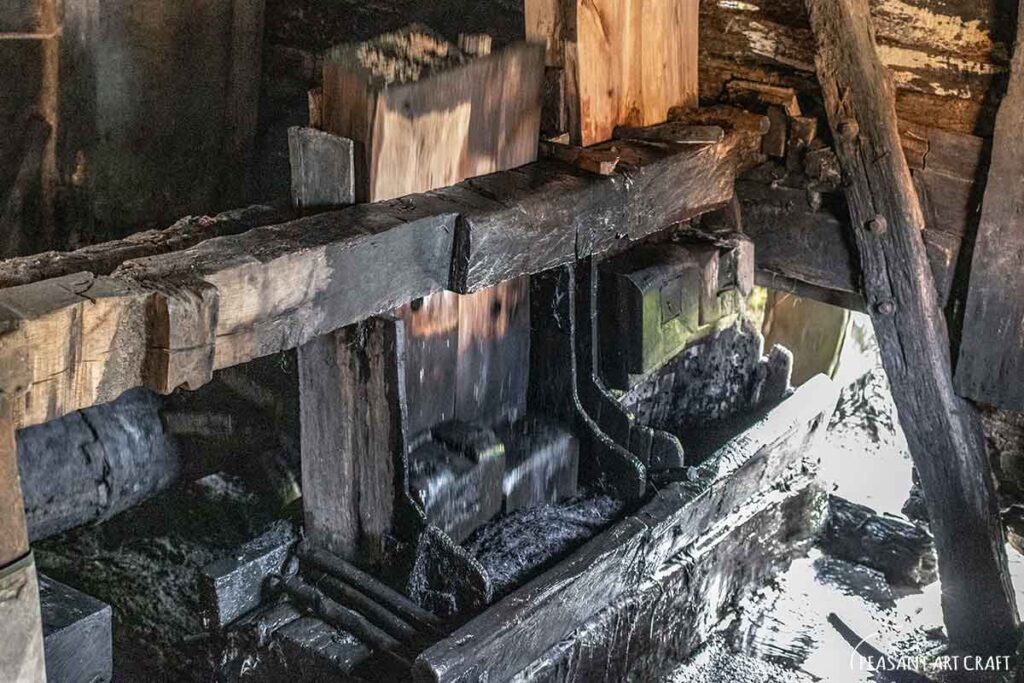
“For the milling of cloth, hot water is required. Here I make the fire,” said Ms. Juja, pointing toward a water tank placed above the fire pit, which contained pre-heated water. Every now and again, she had to pour a couple of water buckets on the cloth. The fire was gone, but a smell of smoke still lingered in the air. The barn was pretty big, enough to fit the fulling mill and a carding machine, both powered by water. Next to these were mounds of woven fabrics to be fulled, all marked and numbered, to help identify the owner.

“This is old stuff. Soon they will go out of existence,” she said. “Although each village had two or more fulling mills. There are hardly any left at all.”
The exact age of this mill is uncertain, but it seems it has been in the family for more than 300 years. This was the first mill in the area. For that reason, they go by the name of Morăreanu lit. (Willman), and they are less well known by their written name, that is to say, Haiducean.

“Life was hard here, in this mountainous region. There was no industry. Farming was the only way to make a living. There were numerous families. We toiled, we raised sheep, we didn’t make coats straight out of tanned pelts, as it’s done elsewhere. We made it from sheep’s wool,” she recalled.
Today, skilled local weavers across the region still bring their homemade fabrics to be turned into felt. The typical cloth for fulling is a woven woolen fabric, made of a tightly spun yarn, with compressed and smoothed fibers with no air between the twists. This is a heavier and even thread in different colors, according to the region – white, grey, black, blue, and green.

After a brief conversation with Ms. Juja, I could identify different types of felt, depending on the woven material and the fulling time. There was a grey cloth for men, that required two days of beating, a black cloth with strands for women made from worsted wool, that required one day of pounding, and even a three-day white cloth for men’s trousers, made of a finer yarn.
We followed Ms. Juja through to the far end of the barn, through the door, and found ourselves standing on a bridge over the river, with fluffy blankets hung on the railing to air and dry after cleaning. Nearby, the river’s water drove a funnel-shaped swirling whirling whirlpool made of wooden planks, washing, and fulling wool

This was a different kind of fulling. The cloths thickened in the whirlpool are spun differently than that of the mill. The fibers are spun into a chunky yarn that’s more airy, bulgy, and then it is loosely woven. The fabric is then fulled inside the billowing waters of the whirlpool by just letting cold water agitate it for a day or two, depending on the material. It results in a light and fluffy fulled wool, rather used for bedding and floor covering, but also can be tailored into gube, some traditional day-to-day hairy coats.

So what’s the difference between the two? At first, it might seem confusing, but at close inspection, the wool fulled in cold water is airier, fluffier, and lighter than the milled felt, which is much denser, thicker, heavier, smooth to the touch, of higher quality, exclusively used for making clothes, like vests, coats, trousers, and house shoes, some type of slippers.
“The felt that was formed in the fulling mill is more resistant, more durable, stronger, sturdier, and far superior to that fulled in the whirlpool, which is a different kind of fulled wool, a much lighter material,” she said.

“There are differences between the threads used in the making process. The milled felt uses a far superior worsted yarn, that is made of parallel long-staple wool fibers They are woven and spun in different manner.” she continued.

With that, she led us indoors, to explain the process of wool preparation. With a heckle, she combed the wool, then separated off the long and parallel fibers. This is prime-quality wool, the kind that is used in the making of milled felt with strands. To strengthen and remove impurities, the rest of the wool is taken to the carding machine, then spun into yarn.

Back in the barn, things got even more interesting. First, she stopped the mill. With the help of her son, they wrapped a belt around the pit wheel, which was the wheel mounted on the opposite end of the axle to the waterwheel. Once the mill started, the pit wheel rotated the belt that powered the carding machine.

Now there were a fulling mill and a carding machine, both powered by river water. How nice is that? So nice that the communists just couldn’t keep away from it. During the regime, they had been expropriated under the communist regime and were rebuilt in the 80s.
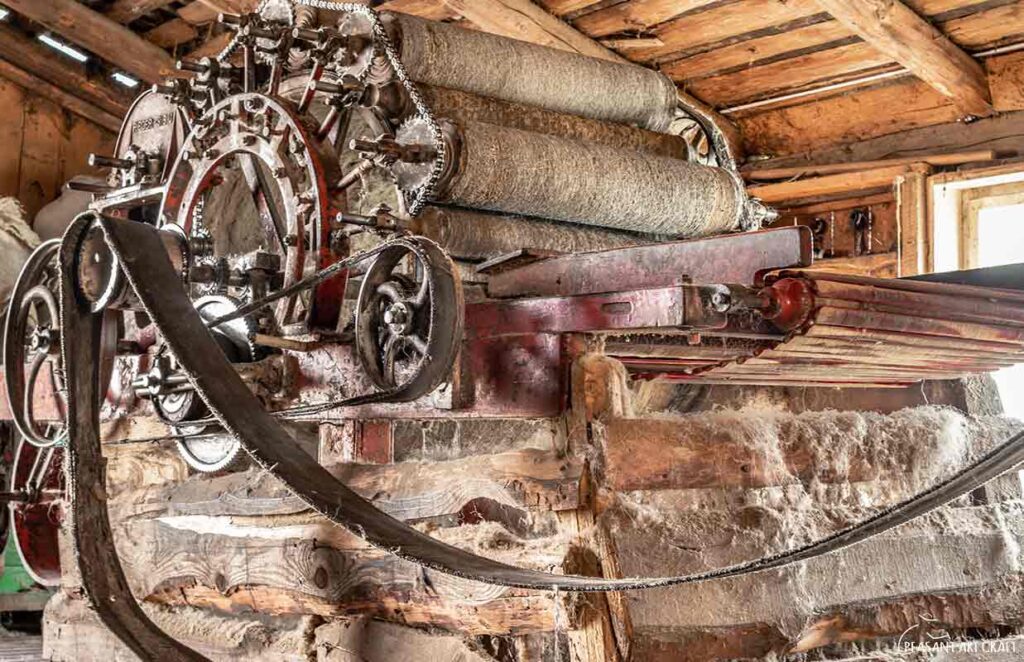
“My father-in-law was arrested in the Sighet prison. If he conceded the fulling mill and whirlpools, they won’t take away his land, they said. Two years later, they took his land, and flung him into prison,” sighed Ms. Haiducean.
Affiliate links Woolbuddy Wool Carders Large Hand Carders for Wool
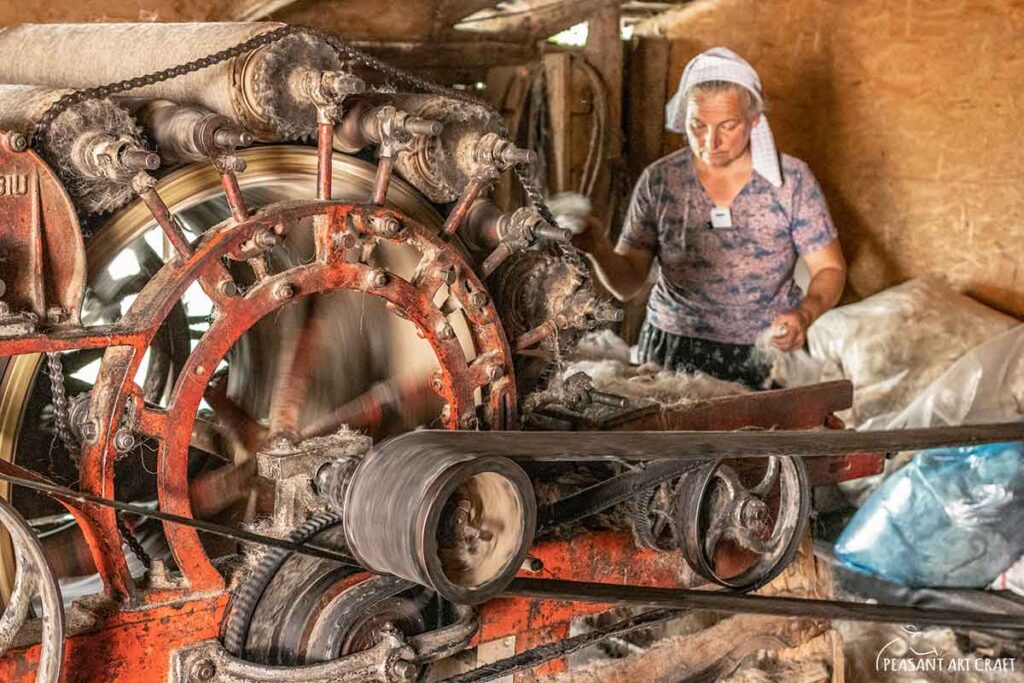
Next to the barn was the old house, now turned into a little museum, where guests can learn more about the finished textiles and the old means of processing wool, from heckling to spinning and weaving. The textiles were worked in vivid colors to enrich the decorations of the house, creating the perfect setting for a Maramureș photo session in original outfits offered by the host.
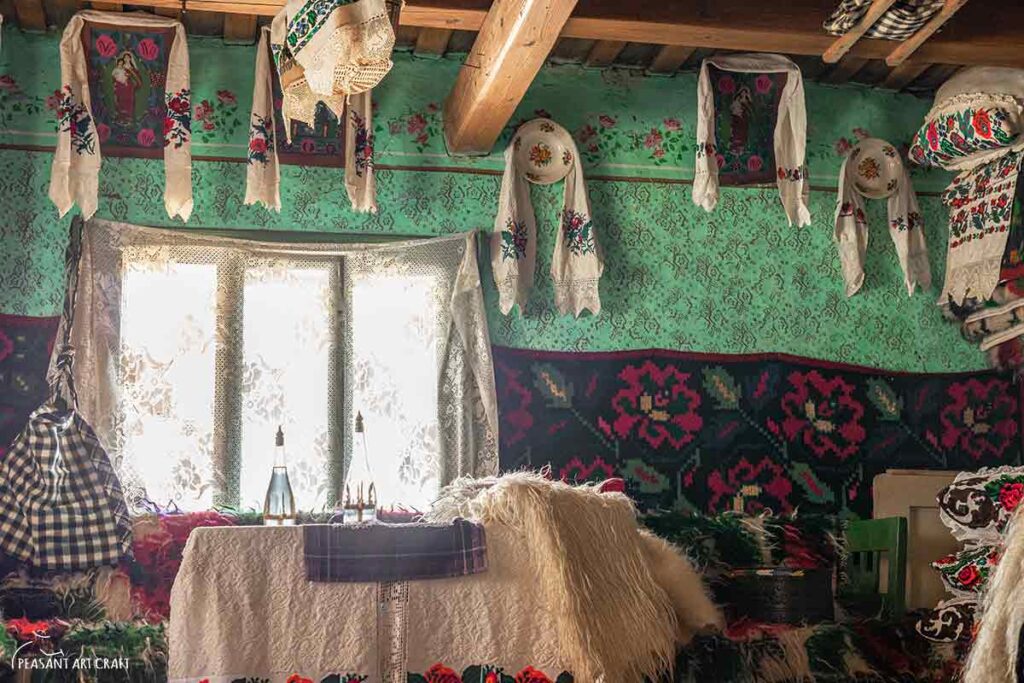
We couldn’t leave without paying a visit just across the street, to the tailor’s house. No trip to Maramures can be complete without a better understanding of their unique traditions and culture. At 80 years of age, Mr. Marinca Vasile is still hard at work, tailoring new coats and mending the old clothes that need fixing. He is a keen tailor, one who has been very fond of his job. His face just shone with joy, while displaying each piece of clothing as he brought it into conversation.
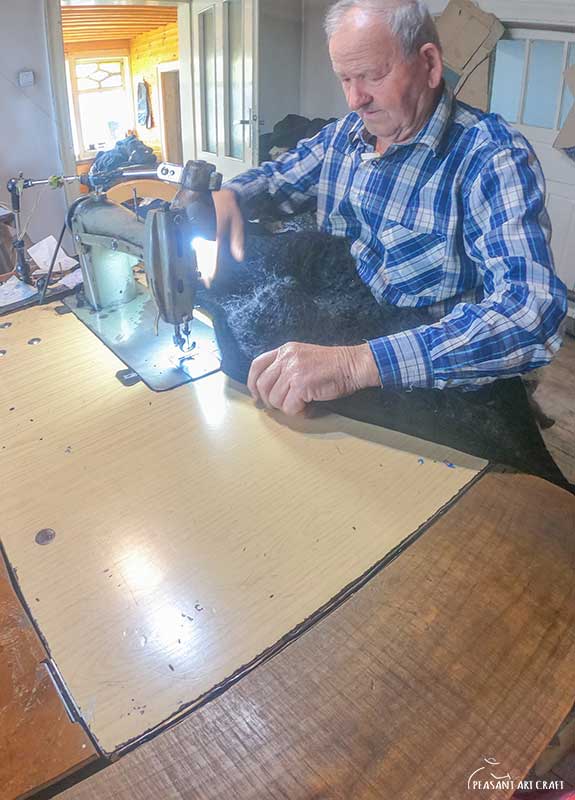

There were vests (pieptare) made of fulled wool and edged with velvet, wool trousers for men, and house shoes made of fulled wool. The most difficult to make was a wool coat with strands (lecrec) for women. It was made of worsted cloth, just like the one we had seen being pounded in the mill earlier that day. Mr. Marinca scrambled up to reach and grab one to show us. It looked very simple but very hard to create. The back of the coat was made of four pieces perfectly styled for a trim fit.
Affiliate links Natural White Wool Roving Top 8 OZ Corriedale from USA Mill
Sewing the thick fulled wool, the lining, and the velvet edging of a winter coat can be a tough challenge, requiring skills that can only be developed in time. While he was sewing, he had to stop every few stitches to adjust the fabric to make sure the seams were aligned. His sewing machines had been adapted for very thick clothes.


Mr. Marinca is very friendly and fond of his sewing machines and the sound that they make. But mostly he likes to talk about his job. We said goodbye and promised to call soon, as Mr. Marinca and his family gathered to give us warm wishes.
Back in the Haiducean’s yard, at the bottom of the garden, Ms. Juja and her daughter-in-law had already set a cauldron of organic strawberries to make jam, and the air was filled with the sweet scent. They said they like to treat their guests with all manners of homemade goodies during their stay in their guesthouse- homemade jams, cheese pies, vegetable spread, and sweet dough bread, just to name a few. I liked visiting the Haiducean family’s household so much that I regretted not having booked our stay in one of their accommodations. At every turn there were new wonders, a place where time seemed to have stood still, definitely recommended for anyone seeking an authentic village life experience.
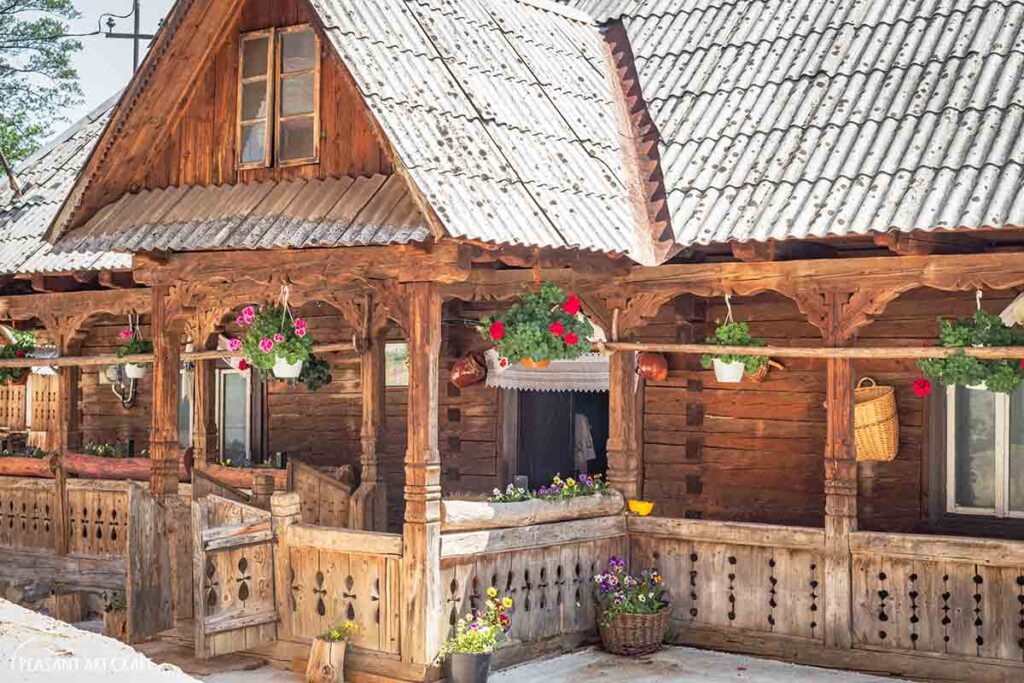
The video below shows the complete process of fulling wool in two different ways and we thank Ms. Haiducean for being so kind to us and having the patience to give us all the explanations we asked for. If you enjoy it and find it helpful, don’t forget to like, comment, and share. Thank you for watching!
Contact tailor Vasile Marinca:
Phone: 004 0758 434 116
Similar Articles
Hitting The Woodworking Paradise With Impressive Wood Carvings!
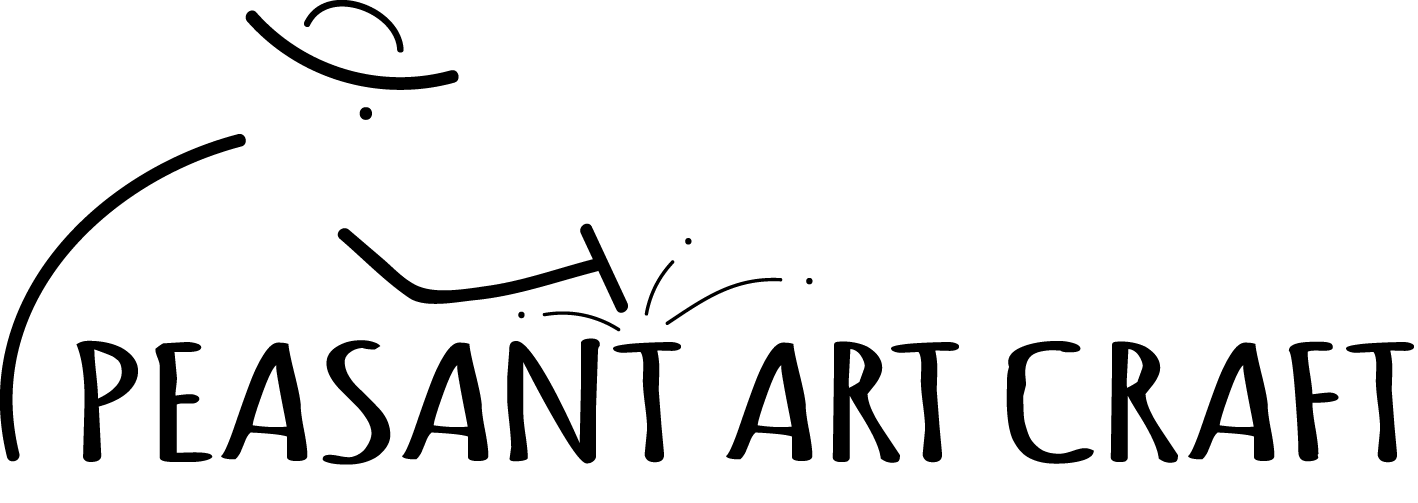
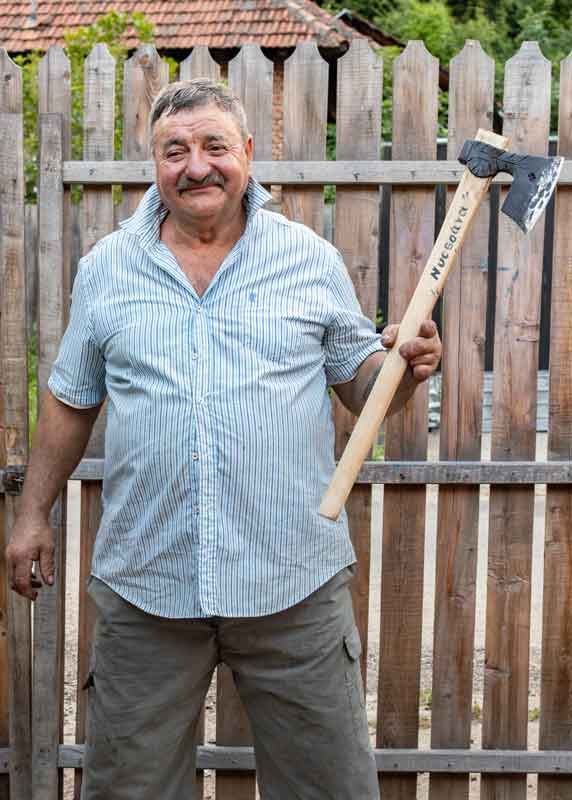
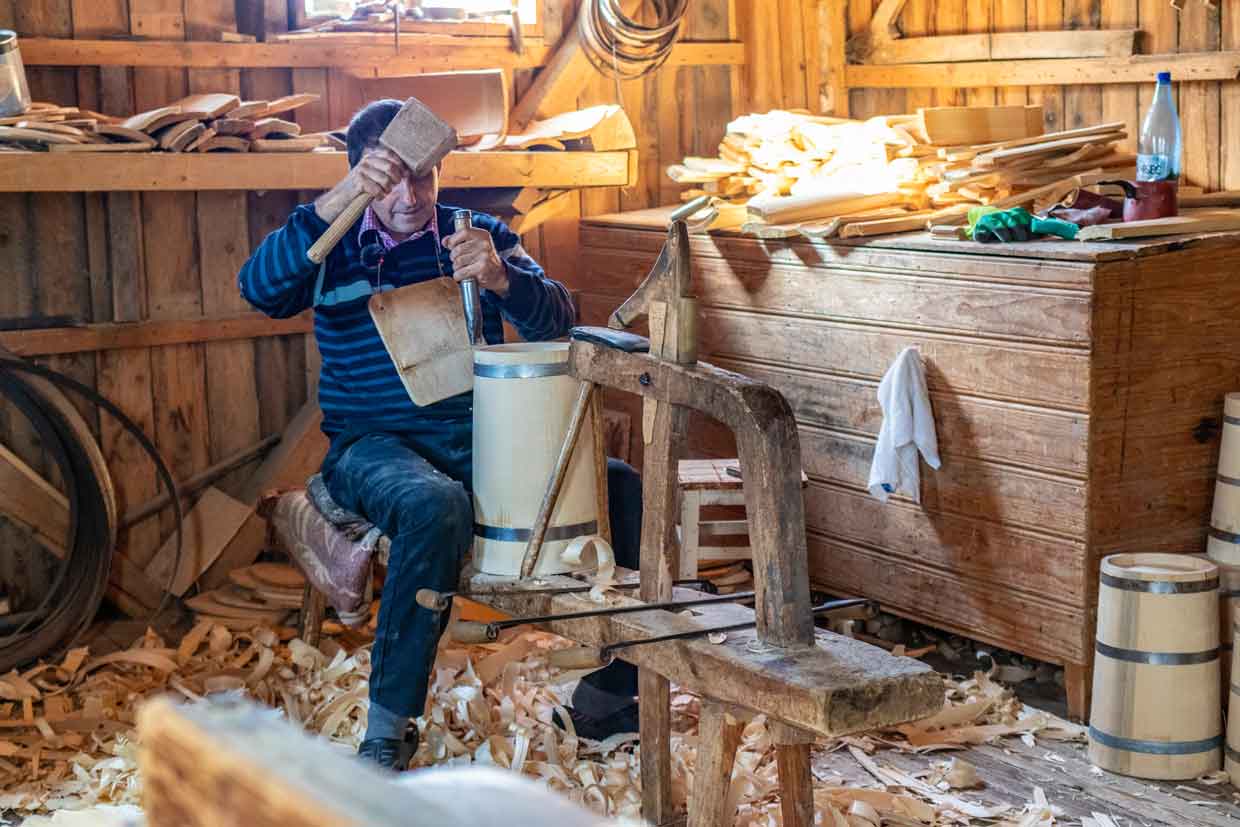
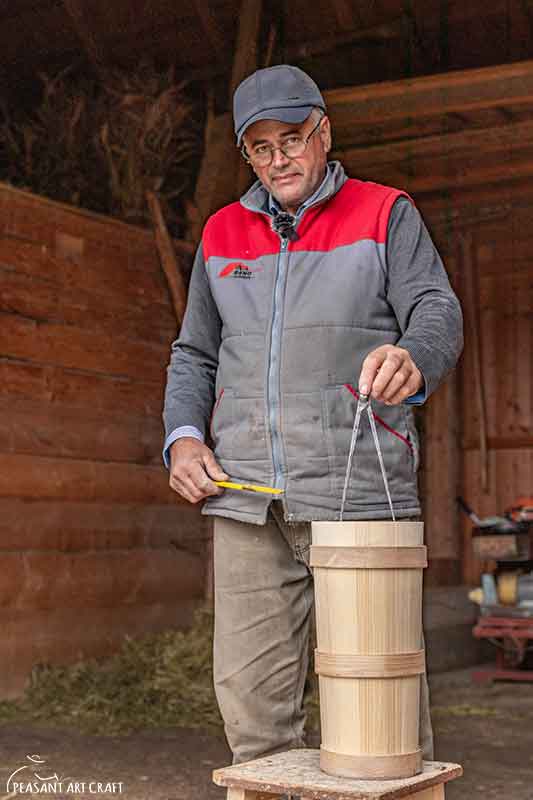
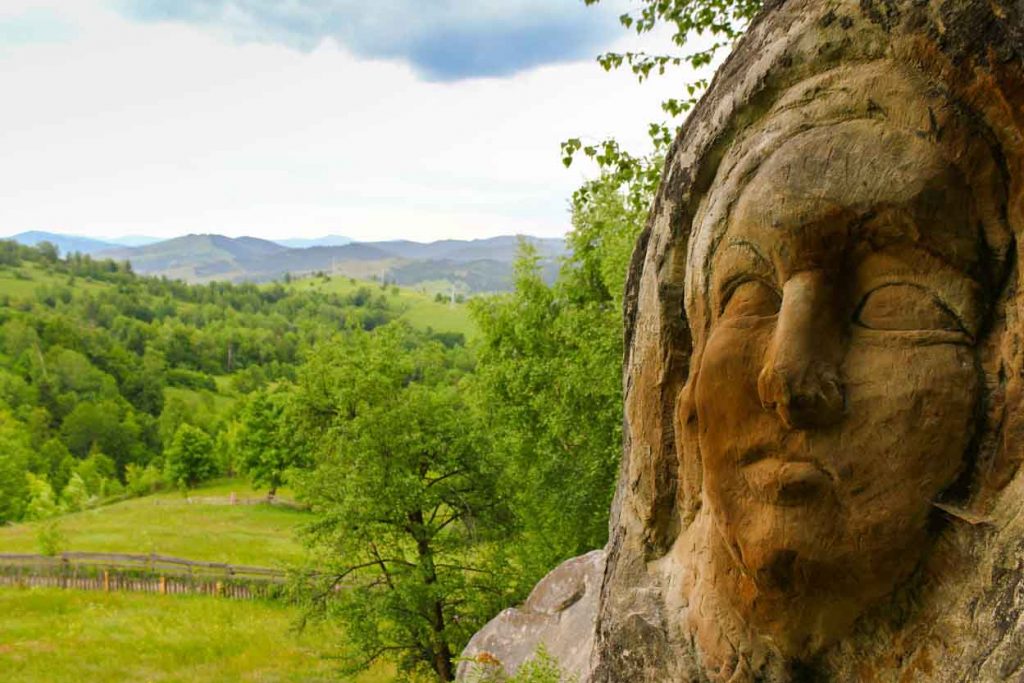
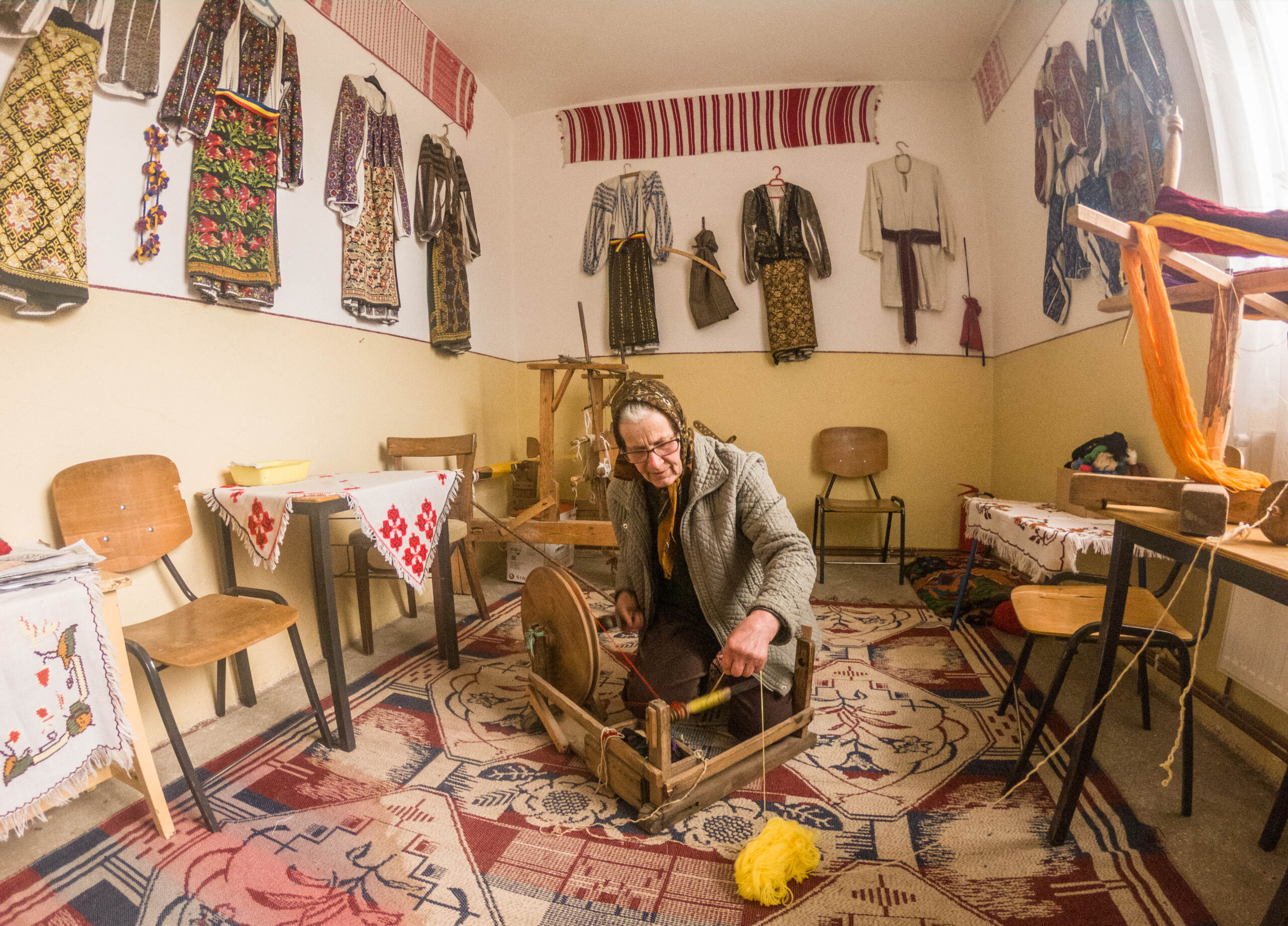


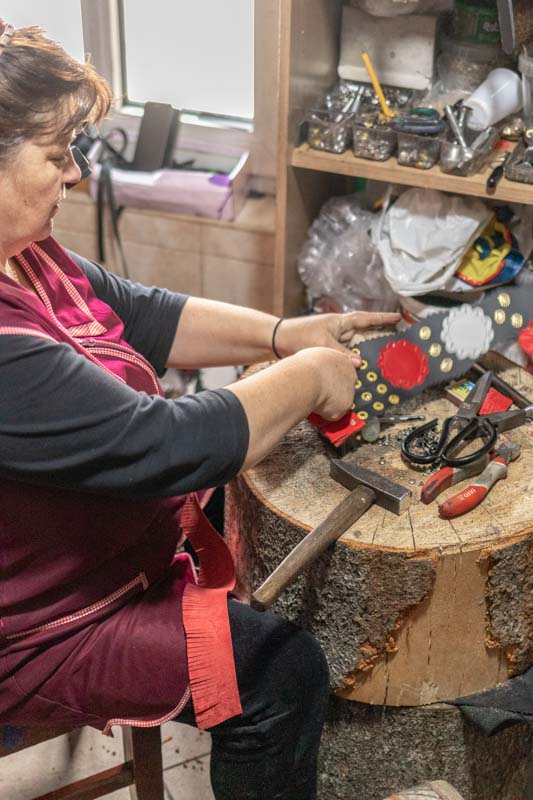
Blog Comments
Violeta Sfeclis
June 24, 2025 at 1:33 pm
Juja Haiducean (a Morarenilor) from Sârbi, Budești commune, Maramureș, has just been designated a Living Human Treasure, in the field of “popular technical installations”.
Juja has been working all her life. And her livelihood revolves around wool. Wool without which there would be no blankets, bibs, cioareci, lecrices, sumanes. Juja works wonders with wool. Both with her hands and with the treasured “machines” that the family has in the household: a whirligig, a piuă, a wool-shearing machine (foșalăi) – all of these are still used, lovingly maintained, even if the work is not easy at all and in other villages, installations of this kind have long disappeared.
For a UNESCO Geopark, such a man is a priceless treasure. Alive and authentic. Eco Maramures